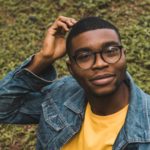Columbia University Diversity: An In-Depth Look
Attending Columbia University is a dream for many students. The world-renowned Ivy League is located in Morningside Heights in Upper Manhattan, and students from across the globe flock to the university to take advantage of the stellar programs in many disciplines. Columbia is home to students from many different backgrounds. What, specifically, does the university look like in terms of diversity? Read on to learn about ethnic, geographic, financial, gender, and other representation at Columbia. What does diversity look like at Columbia? The university offers the following information about the racial/ethnic makeup of the student body from fall 2020. Race/Ethnicity % of Undergraduate Student Body (Columbia College/Engineering/General Studies) % of Total Student Body (undergraduate schools/Morningside Graduate & Professional Schools/Medical Center Graduate Schools) Asian 16.5% 12.9% Black/African American 6.7% 5.1% Hispanic or Latino 14.0% 8.4% American Indian or Alaska Native 0.4% 0.2% Native Hawaiian or Other Pacific Islander <0.1% <0.1% Two or More Races 5.7% 3.0% Unknown 4.4% 5.2% White 33.9% 30.7% International 18.2% 34.4% The university does not provide data about the ethnic makeup of the international component of the student body, but looking exclusively at the percentage of both the overall and undergraduate student populations, according to CollegeVine’s benchmarks, Columbia can be characterized as a diverse institution (30-50% white students). Columbia provides the race and ethnicity breakdown of full-time faculty, too. The university reported the following percentages for fall 2019. Race Percentage International 5.1% Unknown 2.8% White 65.1% Asian 17.2% Hispanic/Latino 4.7% Black/African American 4.2% Native Hawaiian/Pacific Islander N/A American Indian/Alaska Native N/A Two or more 0.8% In 2017, The New York Times published a study on economic diversity and student outcomes at colleges and universities. Below is the data about economic brackets and the percentage of students who came from each at Columbia. Top 0.1% 2.9% Top 1% 13% Top 5% 36% Top 10% 48% Top 20% 62% Bottom 20% 5.1% Keep in mind that Columbia is need-blind, no-loan, and meets 100% demonstrated need. This means that their financial aid is extremely generous, and that students from lower-income backgrounds should pay very little to attend Columbia. But despite these policies, students at Columbia come from disproportionately rich backgrounds. All 50 states and 69 countries are represented in Columbia’s student body (Class of 2022). The top states represented are: Students come from the below regions. Mid-Atlantic 35% Midwest 13% New England 8% South 21% West 24% International 16% Columbia meets 100% of admitted first-year students’ financial need for all four years, whether or not they are U.S. citizens. However, the university is need-aware when evaluating the applications of international students (undocumented students are characterized as international students for this purpose). International applicants should indicate that they intend to apply for financial aid. Columbia offers a number of cultural resources, initiatives, and opportunities for diverse students, such as: Additionally, the university has student groups and organizations centered around specific communities, cultures, or languages, like: In 2017, Diverse: Issues in Higher Education reported that Columbia planned to dedicate $100 million over the subsequent five years to “faculty recruitment, career development and creating a pipeline for potential professors, as well as doctoral and post-doctoral students from underrepresented groups.” Already, the school had allocated $85 million since 2005 for similar purposes. (A 2019 Columbia Spectator article questions the efficacy and methodology of the initiative.) The university also has a Task Force on Inclusion and Belonging at Columbia, which is open to all students and faculty. One initiative of the Task Force is Campus Conversations, a program in which students receive training to facilitate conversations addressing issues like identity, race, and community with their peers. Columbia earns 4.5 out of five stars on the Campus Pride Index, which bases its ratings on LGBTQ programs, practices, and policies for inclusivity on campuses. The university offers many resources for LGBTQ+ students, including: Columbia also offers events such as: Additionally, Columbia has policies aimed at inclusivity. For example, according to the “preferred name” policy, students may change their first and/or middle name in Student Services Online. Students may also request housing accommodations that meet their gender identity and expression needs. The university has a dedicated LGBTQ at Columbia Health page that details the specific services available for transgender students. Counseling and Psychological Services (CPS) has a Sexual and Gender Identity Team with experience working with LGBTQ students, too. Students have access to groups, which, among many others, include Columbia Queer Alliance, GendeRevolution, Proud Colors, Queer & Asian, JQ, and GS Alliance. Known as the country’s Melting Pot, New York City is considered one of the most diverse cities in the United States. According to the government, it currently has 3.1 million immigrants (as of a 2018 report). The Census Bureau provides the following statistics about the racial/ethnic makeup of the city: White alone 42.7% White alone, not Hispanic or Latino 32.1% Black or African American alone 24.3% American Indian and Alaska Native alone 0.4% Asian alone 14.1% Native Hawaiian and Other Pacific Islander alone 0.1% Two or more races 3.6% Hispanic or Latino 29.1% Morningside Heights, the neighborhood in which Columbia is located, has a racial/ethnic makeup of: White 46.1% Hispanic 15.8% Black 18.7% Asian 15.7% Two or more 2.6% Other 1.1% You’ll find neighborhoods with high populations of immigrants from specific countries and restaurants and shops featuring the associated cuisines, like Chinatown, Koreatown, Little Italy, Little Poland, Little Dominican Republic, Little Odessa, and many, many others. New York is also home to one of the largest LGBTQ+ populations across the globe. The famed Pride March draws people from all over the country and the world, and each outer borough hosts events for Pride Month. The Stonewall Inn, the site of the 1969 Stonewall riots and now a gay bar in Greenwich Village, made the neighborhood famous for being a gay rights landmark. For many students, diversity plays a large role in helping gauge fit, but it’s not the only one. In addition to ensuring that cultures and backgrounds are well-represented, you should also look at factors like top programs in your area of interest, location, size, student-to-faculty ratio, and more. It can be difficult to gauge which schools have all the resources you need, but we’ve made it easy. Check out CollegeVine’s school search tool to help you find the right fit based on your preferences. You can also use our free chancing engine to find out your real odds of acceptance to these schools, and get tips for improving your profile. Want to learn more about Columbia? Read all about New York City’s renowned member of the Ivy League, including costs, majors, and other important details.What’s Covered:
Overview of Columbia Diversity Statistics
Ethnic Diversity
Financial Diversity
Geographic Diversity
Cultural Resources at Columbia

Plans to Improve Diversity at Columbia
LGBTQ+ Inclusivity
How Diverse and Inclusive is New York City?
Is Columbia the Right Fit for You?


